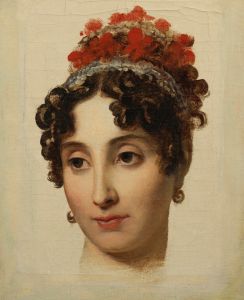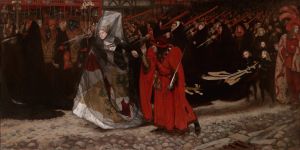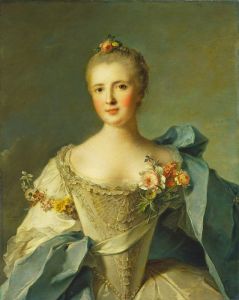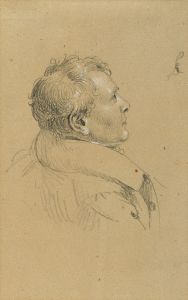
Portrait of Louise-Antoinette-Scholastique Guéhéneuc, Madame la Maréchale Lannes, Duchesse de Montebello, with her Children
A hand-painted replica of François Gérard’s masterpiece Portrait of Louise-Antoinette-Scholastique Guéhéneuc, Madame la Maréchale Lannes, Duchesse de Montebello, with her Children, meticulously crafted by professional artists to capture the true essence of the original. Each piece is created with museum-quality canvas and rare mineral pigments, carefully painted by experienced artists with delicate brushstrokes and rich, layered colors to perfectly recreate the texture of the original artwork. Unlike machine-printed reproductions, this hand-painted version brings the painting to life, infused with the artist’s emotions and skill in every stroke. Whether for personal collection or home decoration, it instantly elevates the artistic atmosphere of any space.
The "Portrait of Louise-Antoinette-Scholastique Guéhéneuc, Madame la Maréchale Lannes, Duchesse de Montebello, with her Children" is a significant work by the renowned French painter François Gérard. Painted in 1814, this portrait exemplifies Gérard's mastery in capturing the elegance and grace of his subjects, as well as his ability to convey the intimate bonds within a family.
François Gérard, a prominent portrait artist of the late 18th and early 19th centuries, was known for his ability to depict the aristocracy and notable figures of his time with a refined and polished style. His works often reflect the neoclassical influence that was prevalent during this period, characterized by clarity of form, sober colors, and strong lines. Gérard was a student of Jacques-Louis David, one of the leading figures of neoclassicism, which significantly influenced his artistic development.
The subject of this painting, Louise-Antoinette-Scholastique Guéhéneuc, was the wife of Jean Lannes, a Marshal of the Empire under Napoleon Bonaparte. Jean Lannes was one of Napoleon's most trusted generals and played a crucial role in many of the military campaigns during the Napoleonic Wars. Louise-Antoinette, known for her beauty and poise, became the Duchesse de Montebello after her husband's elevation to the peerage.
In this portrait, Gérard captures Louise-Antoinette with her children, presenting a serene and harmonious family scene. The composition of the painting is carefully arranged to highlight the maternal figure at the center, surrounded by her children, which emphasizes the theme of familial unity and maternal care. Gérard's attention to detail is evident in the delicate rendering of the fabrics and the subtle expressions on the faces of the subjects, which convey a sense of warmth and affection.
The painting is also notable for its historical context. Created during the final years of the Napoleonic Empire, it reflects the social and political changes of the time. As a portrait of a family closely associated with Napoleon, it serves as a reminder of the personal lives behind the public figures of the era. The work is a testament to the enduring legacy of the Napoleonic period and the individuals who lived through it.
Currently housed in the Louvre Museum in Paris, this portrait remains an important piece within the collection of 19th-century French paintings. It continues to be admired for its artistic merit and historical significance, offering viewers a glimpse into the lives of the French aristocracy during a transformative period in European history.
François Gérard's ability to blend neoclassical style with personal intimacy makes this portrait a remarkable example of his work. The painting not only highlights the artist's technical skill but also his capacity to convey the essence of his subjects, making it a valuable piece for both art historians and enthusiasts alike.

















